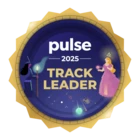How do you measure peer to peer support and how important is this metric to you?
Here are a few reasons why I think the customer helps customer % metric is skewed and unreliable.
It could be low, because:
- Customer helps customer % is often defined by the effectiveness of your moderator team. If moderators are more speedy and effective than usual for whatever reason, chances are peers will provide less marked answers relatively.
- Summarizing and quoting the tips and ideas of others and marking it as an answer can help a topic being more useful and easier to read. It's not counted as peer to peer support, while really the community helped out.
It could be high, because:
- Some customers mark their own response saying 'Customer service fixed it for me' as an answer. The support clearly doesn't count as coming from peers, but it's counted as such in customer helps customer %.
- Other customers are good at redirecting other customers quickly. I'd rather have 100 more visits to service articles than 100 redirections by other customers to these service articles marked as an answer in a topic. These redirections count as P2P support, but really they're really due to bad search performance.
Also:
- The act of marking an answer isn't taken into account in this metric. In true peer to peer support, moderators aren't involved at all imho.
There really isn't anything better than customer helps customer %, but I'd like more in depth analysis of Likes to complement this metric.
Sign up
If you ever had a profile with us, there's no need to create another one.
Don't worry if your email address has since changed, or you can't remember your login, just let us know at community@gainsight.com and we'll help you get started from where you left.
Else, please continue with the registration below.
Welcome to the Gainsight Community
Enter your E-mail address. We'll send you an e-mail with instructions to reset your password.

